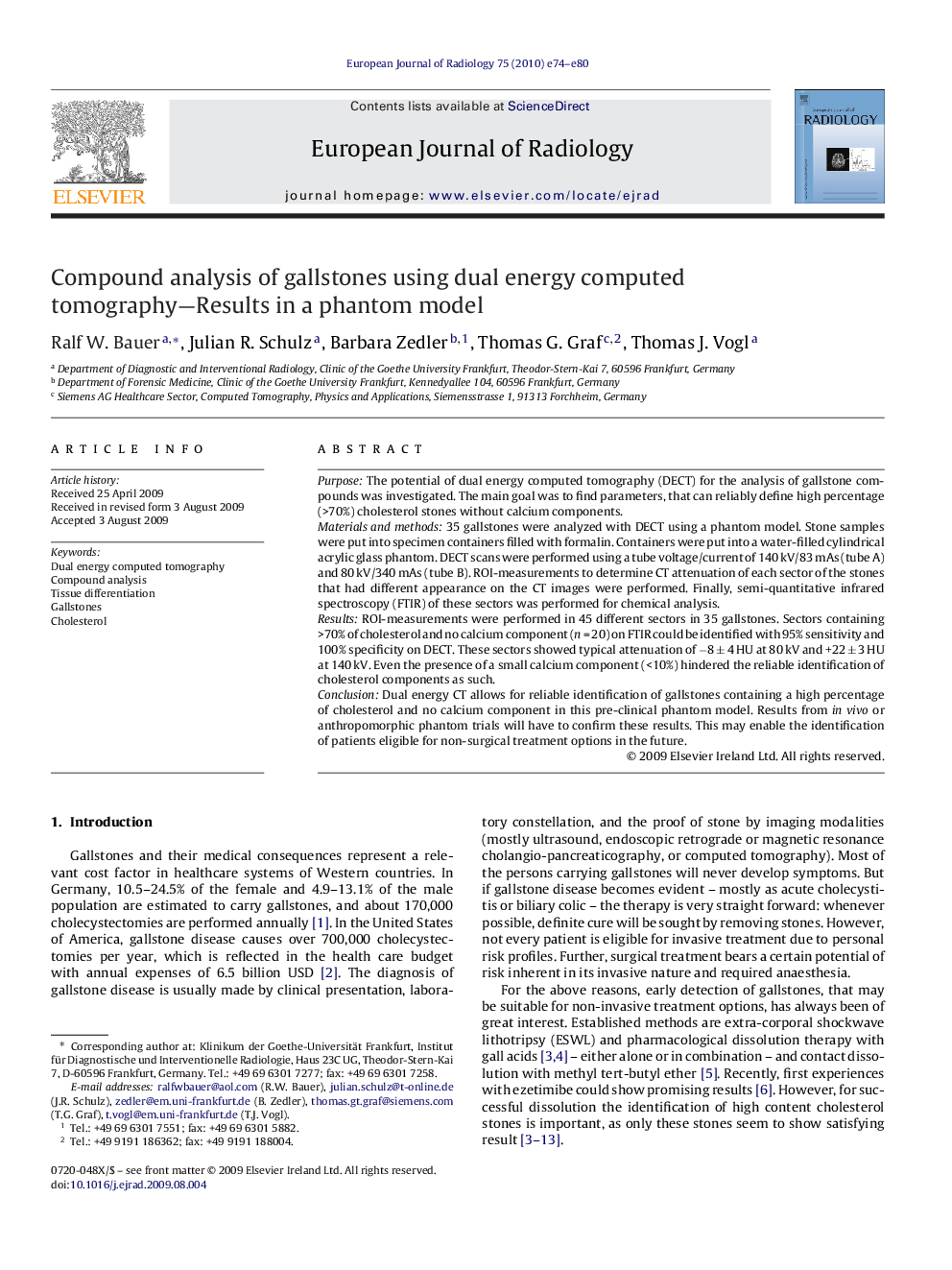| Article ID | Journal | Published Year | Pages | File Type |
|---|---|---|---|---|
| 4227165 | European Journal of Radiology | 2010 | 7 Pages |
PurposeThe potential of dual energy computed tomography (DECT) for the analysis of gallstone compounds was investigated. The main goal was to find parameters, that can reliably define high percentage (>70%) cholesterol stones without calcium components.Materials and methods35 gallstones were analyzed with DECT using a phantom model. Stone samples were put into specimen containers filled with formalin. Containers were put into a water-filled cylindrical acrylic glass phantom. DECT scans were performed using a tube voltage/current of 140 kV/83 mAs (tube A) and 80 kV/340 mAs (tube B). ROI-measurements to determine CT attenuation of each sector of the stones that had different appearance on the CT images were performed. Finally, semi-quantitative infrared spectroscopy (FTIR) of these sectors was performed for chemical analysis.ResultsROI-measurements were performed in 45 different sectors in 35 gallstones. Sectors containing >70% of cholesterol and no calcium component (n = 20) on FTIR could be identified with 95% sensitivity and 100% specificity on DECT. These sectors showed typical attenuation of −8 ± 4 HU at 80 kV and +22 ± 3 HU at 140 kV. Even the presence of a small calcium component (<10%) hindered the reliable identification of cholesterol components as such.ConclusionDual energy CT allows for reliable identification of gallstones containing a high percentage of cholesterol and no calcium component in this pre-clinical phantom model. Results from in vivo or anthropomorphic phantom trials will have to confirm these results. This may enable the identification of patients eligible for non-surgical treatment options in the future.
